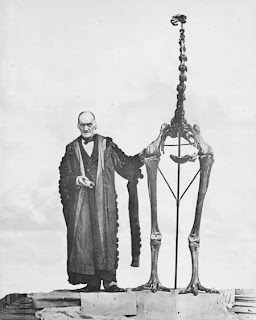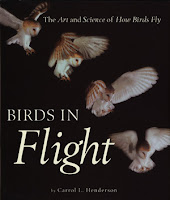In the wake of the forced landing US Airways flight 1549 in the Hudson River, there has been much speculation over how to reduce bird strikes. Now, first off, we do not know for certain that birds caused the engine failure, and we will not know until the engines are found and examined. It does seem likely that a bird collision was involved, however, since the pilots reported a strike and local radar picked up something interesting:
At about the time of the crash, a government weather radar in Upton, on Long Island, registered something in the path of Flight 1549 that a government scientist, Steve Ansari of the National Oceanographic and Atmospheric Administration, said was consistent with a big flock of birds. Mr. Ansari said it might also have been precipitation.
But a specialist in the use of radar to study birds, Jeffrey J. Buler of the University of Delaware, said that the image was more likely “biological than meteorological,” because the amount of radar energy reflected back to the station was smaller than what rain or snow would produce. The radar indicated that the objects were moving toward Upton at about 20 knots, a speed consistent with geese, he said. He also noted that at this time of year, large flocks move between feeding grounds and roosting areas.
Assuming that a bird strike caused the crash, what could be done to reduce such collisions in the future? Apparently there has been some angry ranting about killing birds to reduce strikes,
as discussed in a thread over at 10,000 Birds. In a human-bird conflict of this type, killing birds is the solution I would hope an airport would turn to last, after trying other solutions. Even if killing birds could be justified, it would be difficult to kill enough – and in the right places – to prevent further strikes. Especially in winter, New York City hosts huge flocks of birds. Each of the local Christmas Bird Counts in the La Guardia area recorded several thousand Canada Geese. Plus there are thousands more gulls, starlings, and other possible culprits.
So what could be done instead? Sea-Tac airport in Washington state
has managed to avoid fatal collisions with a multi-pronged management program.
The 113 acres of wetlands near the airport are heavily forested with trees such as cedars and cottonwoods to keep large flocks of birds from feeding and nesting there, and the port sowed 158,000 native plants known to be unattractive to birds, eschewing all varieties that produce fruits, nuts and berries.
The port also developed a grass seed mix containing a fungus that makes it less appetizing to some birds and insects.
Port biologist Steve Osmek scares away ducks, and some adult hawks that have already formed their territory at the airport from departing and landing planes with a small pistol that makes a loud noise like fireworks.
Since June 2001, nearly 100 raptors have been trapped alive near Sea-Tac and relocated to safer habitats in northern Washington.
From September 2007 through August 2008, the FAA recorded that planes struck Canada geese, double-breasted cormorants [sic], house sparrows, rock pigeons and tree sparrows the most -- two strikes per species.
Not all of those tactics would work at La Guardia; the area around it is heavily urbanized, so the vegetative changes would probably be irrelevant to the situation. However, Sea-Tac's example does show that airports can reduce bird strikes – and thus reduce dangers for both birds and humans – without resorting to lethal methods.



















